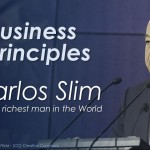how you can construct a industry that issues
We spoke to people who have helped construct a success, seemingly enduring companies about what it takes to create a significant business.
November eight, 2015
it is now easier than ever to launch an organization. but while 400,000 companies flood the market in the U.S. every year, the overwhelming majority of these won’t ever get off the ground, so much less be around in five years. via some estimates eighty% % of all startups will crash and burn.
So what are the secrets of corporations which can be in a position to face the test of time? What does it take to create a business that matters to the sector?
to start to reply to these questions, now we have spoken to people from a variety of industries—from beauty to know-how to furnishings—who’ve helped construct a hit and seemingly enduring companies. whereas they each have their very own methods for developing merchandise that stand out in a crowded marketplace, there used to be one thread that related their outlooks: each and every was once fixated with working out and catering to the needs of their shoppers.
Take Dropbox‘s head of design, for instance, who ensures that somebody from his workforce is spending time with users day-after-day to seek out the way to toughen the way that people work and collaborate online. Or how the founders of Birchbox have discovered how you can pleasure their clients at every stage of the buying course of.
These people consider that mattering as a business way bringing value, satisfaction, and that means to the lives of their clients. learn on to find out how they work to create businesses that now not handiest sell top-notch products or experiences, but additionally encourage others.
Mindshare prior to Market Share
Tristan Walker says that after he was once fascinated about starting a health and style company for men and women of shade, he wasn’t merely involved in what quantity of money there was once to be made by means of catering to this market phase. as a substitute, his head used to be swirling with tales about how difficult it’s to grow up in a country where cosmetics and grooming companies have persistently disregarded your needs as a client. as an example, it has steadily been close to impossible to find the correct basis colour should you happen to be a dark-skinned girl, and except lately there have been no razors available in shops designed for males with coarse, curly facial hair.

Walker himself has experienced some of this angst. Early in his occupation, when he used to be an intern on Wall street, every other dealer rudely advised him to scrub up the hair on his face. “I keep in mind that being mortified not best by the fact that the guy used to be a jerk, but additionally that I didn’t comprehend what to do,” Walker says. “there were just no merchandise for me in the marketplace. For a hundred years, we haven’t had products that have worked for us.”
In 2013, he determined to sort out the shaving downside himself. He founded Walker & Co., an organization with the purpose of constructing health and style easy for people of coloration. during the last two years, he has built a team of 20 workers and collectively, they’ve created a shaving device referred to as the Bevel that solves some the of concerns that many men with thick facial hair, like himself, experience. The product has been a hit: It has a 95% purchaser loyalty charge and can quickly be sold on the shelves of target shops. with his most latest $24 million spherical of series B funding, he’s engaged on growing a collection of other products for people of color. the next product is slated to be launched in 2016.
Walker’s traders—who embrace Silicon Valley companies like Andreessen Horowitz and Google Ventures as well as celebrities like John Legend and Magic Johnson—see the huge market attainable that Walker & Co. is tapping into. Nielsen stories that African-americans already have $1.1 trillion in spending power, a figure that’s rising sixty four% faster than the general market. Catering to these consumers makes just right industry experience, but Walker says he isn’t occupied with earnings presently. Walker believes that the only way his firm will be able to penetrate this customer base is that if he stays thinking about his authentic mission and values.”It’s less about market share and more about mindshare,” he says. “How do we in reality construct an organization that conjures up unbridled loyalty to the merchandise that we promote? It begins from a place of authenticity.”
Walker believes it is very important hear sparsely to what his customers are pronouncing about their on a regular basis experiences with grooming products. as an example, he’s heard from black men in the army who have struggled their whole careers to stay easy-shaven for work. He’s heard from single moms who’ve needed to walk their sons in the course of the vital ceremony of passage of their first shave, but have been stumped as a result of they couldn’t in finding any razors that avoided razor burn or ingrown hairs. These should not simply tales about underserved shoppers; these are stories about individuals who could no longer get on with their jobs or their household lives as a result of manufacturers were not excited about their wants. “These are stories shared by means of hundreds of thousands of individuals,” Walker says. “We take an extraordinarily consumer-centric approach to our innovation. It’s no longer about building it and seeing if they come; it’s speaking to them and realizing that they will come.”
Walker’s means of listening moderately to his target audience and designing products that thoughtfully accommodate their wants implies that he’s not chasing quick increase or fast wins. but in a roundabout way, he believes he’s growing an organization and products so one can subject to individuals of color for the lengthy haul. “The query I ask myself is, do we build an organization that this era can be essentially proud to beef up?” he says. “It goes deeper than just the product. We inspire satisfaction in gents who’ve beards and will by no means shave.”
the value Proposition needs to be Deep
while Katia Beauchamp and Hayley Barna were still in trade school, they realized they had struck gold with an idea that may usher the beauty business into the internet technology. It was 2010, and while many categories—books, garb, electronics—had found their way onto e-commerce systems, women didn’t wish to buy their makeup and skincare merchandise on-line, considering that a very powerful part of the buying expertise is travelling makeup counters to pattern merchandise. “women are expecting to check and take a look at and scent and smear a product before they’re willing to purchase it,” Beauchamp says. “the number 1 reason that anyone buys a magnificence product is trial.”

So collectively, Beauchamp and Barna developed the edition at the back of the now-well-known Birchbox—the monthly subscription service that offers personalized samples of beauty products right to your doorstep. The pair focused in moderation on execution: The products came wrapped in lovely tissue paper, in order that every monthly supply felt like a gift. girls fell in love with the theory virtually straight away.
if truth be told, the concept used to be so irresistible that different firms quickly flooded the market with hundreds of alternative month-to-month subscription bins, no longer simply within the magnificence class but additionally in every other class conceivable: There at the moment are subscription boxes full of snacks, socks, sex toys, and soap. And yet, despite copying the version, none of those other firms have come on the subject of Birchbox’s increase and profitability.
So how has Birchbox managed to stand the test of time, at the same time as other competitors have sprung up in their wake? Beauchamp says the key to Birchbox’s success was that the box itself was never on the core of the business. The box was only a advertising and marketing tool that allowed consumers to find out about merchandise that they may purchase from the Birchbox online store.
despite the fact that the subscription model was a success, Beauchamp and Barna realized that the novelty of a gorgeous monthly sample field would quick lose its allure. so that they labored with beauty brands to make certain that customers had been at all times receiving the latest merchandise. They built an internet retailer that made it easy for purchasers to buy merchandise they’d sampled. in addition they created a cosmopolitan analytics infrastructure so that they might personalize every box to every consumer’s tastes, whereas providing valuable data and comments to beauty brands to assist them with product building.
“We understood that the worth proposition had to be deep for us to develop into a staple in consumers’ lives,” Beauchamp says. “It couldn’t just be enjoyable, as a result of enjoyable wears off. It couldn’t simply be pretty, as a result of ultimately you might have enough pretty issues.”
And indirectly, the pair had large goals: They needed to create a business that mattered, not simply an exhilarating new marketing idea. For them, this intended bringing the beauty business into the digital age with the aid of removing the friction of the invention process for the patron. This was once a much more formidable challenge, but Beauchamp believes that to create a company that is a success in as of late’s crowded market, entrepreneurs don’t have any option but to supply consumers one thing of real value. “We knew that we’d bitten off a lot,” she says. “but I really believe that customers’ calls for are getting more complicated: they need extra substance and depth to what companies provide them. We have been feeling that in ourselves and that’s why we constructed Birchbox. “
client-Centric Design changes the whole thing
In 2007, Drew Houston, an MIT student, used to be on a bus from Boston to new york hoping to get a great 4 and a half hours of work performed. but as soon as he sat down, he realized he’d left his flash drive at house. while he was left to twiddle his thumbs on the bus trip, it occurred to him that everyone might make the most of a cloud-primarily based file storage and sharing machine, so as an engineer, he determined to construct Dropbox with fellow pupil Arash Ferdowsi. on the grounds that then, they’ve racked up a customer base of four hundred million people.
however what units Dropbox apart isn’t simply the flexibility to access information. after all, file transferring is just not a singular concept and it has been round for a long time. the issue was once that many of those technologies have been clumsy and inelegant; employees may obtain recordsdata from an organization server the usage of FTPs, for instance, however this concerned logging into a fancy machine. “It was similar to having to research a new language for you to add a file,” says Alex Castellarnau, Dropbox’s head of design. “In many ways, Dropbox was making a design resolution, no longer just a technology solution. Dropbox used a known idea—a folder—to provide an explanation for the cloud and syncing files.”

Dropbox has at all times been obsessed with designing a product that customers would find intuitive. Castellarnau says that keeping things simple is essential, to reduce pointless nervousness on the person’s section. this means constantly referencing issues that the common person would already recognize: the folder, drag-and-drop files, simply clicking a button to share a file with any person else. “It’s about tapping right into a known norm, or an current social convention, and adding worth onto that,” Castellarnau says. “You and that i may more than likely provide you with 50 how to reinvent the site visitors gentle, but why would we want to, when it is this type of universally known norm?”
This all sounds very basic, however Castellarnau says that design that looks clean and simple to use actually takes a number of careful thinking on the a part of the design staff. Dropbox is obsessed with working out their shoppers; as they work to enhance new merchandise and tweak present ones, they’re continuously testing their design with real subjects. There are 20 folks on the company whose only function is to talk to users to glean insights. They ask to be invited into customers’ homes or offices to observe how they use Dropbox and combine it into their work. sooner than any product sees the sunshine of day, hundreds of users have had an opportunity to try it out and offer their feedback. Dropbox additionally checks products world wide, to peer if cultural norms alternate the way that folks interact with Dropbox. “There’s no longer a single day through which we are not engaging with users in a technique or another,” Castellarnau says.
Castellarnau’s fundamental concept: it’s never value developing a new tool only for the sake of including a new function. In different words, every new tool should reply to a transparent consumer need. this is a very totally different philosophy from companies like Apple which have tried to preempt developments. Steve Jobs famously as soon as mentioned, “a lot of occasions, people don’t understand what they need except you show it to them.” At Dropbox, center of attention teams and person preferences are driving forces that dictate the corporate’s agenda. Castellarnau factors out that to start with, buyers turned to Dropbox to get entry to their own recordsdata, however they’ve considering the fact that started to make use of the product basically for sharing recordsdata with people in teams. So nowadays, Dropbox’s design crew is focused on simplifying the way that groups can collaborate and work together on the platform. “Our users define the mission of the company,” Castellarnau says. “We evolve with them.”
The Riskiest factor you can do isn’t Take dangers
“The riskiest factor you can do just isn’t take dangers, but to be stagnant and secure,” says James Brett, president of West Elm.”I don’t recall to mind this method as brave; I bring to mind it as survival.”

He would understand. five years in the past, when Brett began working at West Elm, he had one mission: to infuse the furnishings brand with soul. at the time, West Elm was simply every other model throughout the Williams-Sonoma conglomerate stocked with solid, predictable products that generated a respectable revenue stream for the corporate. however Brett believed that if the logo endured to be unexceptional, it would not final lengthy; he might foresee that it might lose out to manufacturers that had more character and that resonated more deeply with customers.
His job, as he saw it, was once to provide West Elm a particular aesthetic that folks would right away acknowledge. Out of a blank canvas, he wished to create a look that was handcrafted and that informed a narrative concerning the people who had made every piece of furniture. “i needed to foster that emotional connection,” he says.
in the case of aesthetics, though, choosing to take a brand in a brand new course comes with uncertainty and the assorted possibility of failure. a brand new look might fall flat or be panned by way of critics, losing the corporate millions in unsold merchandise. however Brett, who labored at Anthropologie and city Outfitters prior to joining West Elm, had expertise developing daring manufacturers that had a transparent voice available on the market—and he felt find it irresistible was once time to belief his instincts.
however Brett does no longer take dangers blindly. He has a philosophy about how one can go about introducing new ideas and concepts into a brand. the first step: Register a huge win early. “you will have two minutes to turn things round and get people’s consideration,” he says. “You wish to build your credibility.” As Brett assessed all of the modifications he wished to carry out, he picked one who he felt would have the perfect probability of success. In his case, he interested by one product line: bedding. He would be capable to introduce new duvets and sheets very quickly, and he had a good experience of what sorts of patterns would strike a chord with shoppers, so he enlisted all his designers and product managers to get behind this one class.
When this primary project proved successful, he moved on to an even bigger undertaking, which used to be to empower all the retailer managers to revamp showrooms to feel more natural, like a house. Then, he used to be to take an even bigger chance, which was to shoot the catalogs very in a different way from what had come earlier than, to make much more dramatic adjustments to the emblem’s picture. the new paintings was once full of antique gadgets and did not have a staged really feel; additionally they drew attention to the makers of quite a lot of products. “These have been rather small issues that I could do with minimal tools,” Brett says. “I didn’t have to move out and ask for large amounts of capital, but they had a huge impact on the industry.” throughout the first two months of Brett’s tenure, gross sales elevated via 20% and stored growing over the subsequent months. These successes allowed him to articulate his imaginative and prescient and gain the trust of the board and the top brass at Williams-Sonoma.
every other a very powerful side of Brett’s technique used to be to win the reinforce of his group of workers individuals, so they did not really feel like these changes had been happening too quick or without their input. It was important to Brett to keep in common communication together with his crew, to explain his imaginative and prescient to them and likewise ask for his or her remarks. however not directly, Brett believes that being progressive as a company is empowering to employees. The very act of taking dangers helps workers really feel that their work issues. “folks wish to come to work with a way of objective,” Brett says. “Taking these dangers is not just a consumer strategy, it’s absolutely a approach to rent the most effective talent and to keep them engaged.”
encourage
With so many fitness options available on the market, it takes effort to face out. but SoulCycle, a series of cycling studios that has constructed up a cult following, has managed to be observed. It was once founded in 2006—and by way of 2011, it had been acquired by using Equinox. Now it’s about to go public, whereas additionally impulsively increasing throughout the united states.

Melanie Whelan, SoulCycle‘s CEO, believes that the secret to the company’s success is that fitness shouldn’t be on the heart of SoulCycle. When the corporate got here onto the scene, spinning used to be something that you should do as part of your gymnasium membership—but SoulCycle used to be designed to be more than simply an exercise regimen: It used to be supposed to be a boutique studio the place people may come to escape the stresses of their lifestyles and find concept. The expertise is meant to be as much about reaching emotional stability as about bodily well being. “There used to be an actual gap in the market to create an exercise expertise that used to be joyful and enjoyable,” Whelan says. “The core of the business was growing an experience that was once magical and that will prolong out of doors the studio into folks’s lives.”
it’s laborious enough creating an effective workout software—but SoulCycle‘s purpose was once much loftier. It needed to create a workout that didn’t really feel like work. to achieve this, the company has examined each side of the train expertise and reimagined it. “We have a look at a thousand little elements in our studios,” Whelan says. “we want them to be sanctuaries for our riders.” for example, to create an otherworldly ambience, SoulCycle outfitted rooms with candlelight and other atmospheric lights as riders cycle. In a extra sensible move, the corporate put in cellphone chargers in lockers in order that riders may go away their sessions with fully loaded batteries.
however Whelan says that it’s the workforce that defines the experience for riders. “we say we’re a hospitality company ahead of we’re a fitness company,” she says. entrance desk body of workers are anticipated to get to grasp riders well and forge relationships with them, so they may be able to ask how their day is as they arrive through the door. SoulCycle seeks out instructors who’re motivational and slot in smartly with the company’s inspirational culture. alternatively, Whelan says that these instructors are additionally encouraged to be genuine and to specific themselves; inside the large framework of the corporate, they have the freedom to choose their very own music and modify routines based on the vitality in the room.
Whelan believes that constructing a business that matters involves thinking past merely delivering an efficient provider. She believes discovering ways to provide buyers a magical, memorable experience is key. this is one thing that Whelan and her group of workers discuss every day. And for the reason that purpose is to make the biking expertise more than just exercise, she does not see SoulCycle’s competitors as other fitness studios, however anything that a consumer might be doing with their spare time. “that includes staying home on a cold day in their pajamas,” Whelan says. “We truly challenge ourselves to make every expertise that a rider has superb so that they select to come back again.” In other words, the spin type needs to be so inspiring that riders can not wait to hop on the SoulCycle saddle again.
related: inside the “Cult” Of SoulCycle
How are you building a business that issues? tell us within the comments part below.
Hear more from a few of the interviewees in this article at our upcoming fast company Innovation pageant.
(34)














